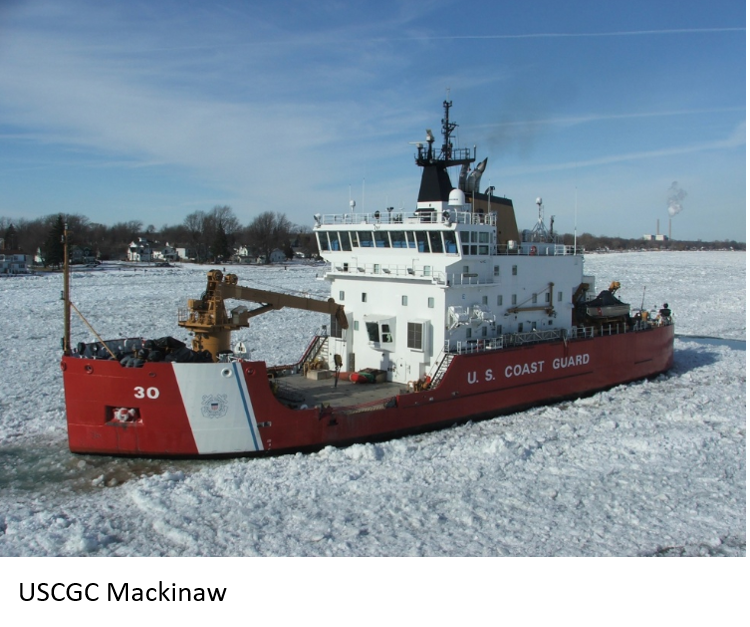Shipping and Logistics

Great Lakes Shipping Season Winds Down
Written by Sandy Williams
December 8, 2019
Another shipping season on the Great Lakes is drawing to a close. Lake carriers are busy moving coal and ore to steel mills in the region to build stocks for the winter before heavy ice overtakes the lakes. The Soo Locks and St. Lawrence Seaway are scheduled to close for the season on Jan. 15. During the eight-week hiatus, ships are overhauled and the locks receive updates and repairs.
Winter weather has already caused complications at the Duluth port. Heavy ice on the Aerial Lift Bridge at the port’s entry caused it to stick in the down position for more than two days last week. Ships were diverted to the Superior Entry, a longer route adding shipping costs for carriers.
High water and flooding on Lake Ontario prompted a proposal to raise the Moses Saunder Dam outflow levels into the St. Lawrence Seaway. The idea was nixed by shipping industry leaders who said the plan would negatively impact the shipping economy.
“The options for increasing the flow would provide limited additional relief—on the order of 2 to 4 centimeters—and would have considerable negative impacts on other interests, including flooding downstream,” said an International Joint Commission email shared by the Duluth Seaway Port Authority on Friday.
Raising the dam would increase the outflow above the safe navigation limit and force an early closure of the Seaway. Moving up the closure date would cost the U.S. and Canadian economies an estimated $193 million for each shipping week lost, said the Chamber of Marine Commerce.
More Icebreakers Needed
Ice breaking has become a critical concern for the shipping industry. The number of icebreakers in service by the U.S. and Canadian Coast Guard has dropped 60 percent from levels in the 1980s and 1990s. The U.S. currently has 11 icebreakers and Canada only two, down from 19 and 7, respectively.
The aging of the existing vessels has caused as many as five U.S. icebreakers to be sidelined during the ice season due to engine failure and other age-related issues. Last year three of the U.S. vessels were out of commission due to engine problems. Six of the U.S vessels are over 40 years old and Canada’s vessels are 50 and 35 years old.
The last U.S. icebreaker to be commissioned was the USCGC Mackinaw in 2006. It is the only heavy-duty icebreaker on the Great lakes at 290 feet and capable of cutting through ice 32 inches thick.

“The nation’s economy depends on reliable and predictable icebreaking on the Great Lakes. Last year, when cargoes carried on U.S. Great Lakes ships were delayed or cancelled because of inadequate icebreaking, 5,000 jobs were lost and the economy took a $1 billion hit,” said Lake Carriers Association President Jim Weakley.
“We continue to voice our concerns that both the U.S. and Canadian Coast Guards need to take this seriously and put more icebreaking resources in the Great Lakes and repower the current aging assets to ensure they can continue to break ice. However, the response has been slow as molasses in winter and insufficient for the decrepit fleet of icebreakers. We are at a critical juncture. Just to keep the small number of icebreaking ships operating is an ongoing challenge,” said Weakley.

Sandy Williams
Read more from Sandy WilliamsLatest in Shipping and Logistics

US Great Lakes iron ore cargoes down notably through May
The Lake Carriers' Association reported a considerable decline in monthly iron ore shipments from US ports on the Great Lakes.

Wittbecker: West Coast port congestion
What's going on in West Coast ports?

Wittbecker: Mexico invests in port capacity despite US tariff troubles
The Mexican government aims to transform Manzanillo into the largest seaport in Latin America, capable of processing some 10 million TEU (20-foot equivalent units) per year by 2030. It is already Mexico's largest port and the third largest in Latin America, handling nearly 4 million 20-foot containers in 2024.

Wittbecker on Aluminum: When do the tariffs reach Main Street?
Containers sailing from China in April are down 15%-20% and Hapag Lloyd says their future bookings transpacific are down 30%.

Wittbecker on Aluminum: US-China trade war clobbers cross-Pacific trade
Container shipping lines have sharply increased blank sailings on Transpacific routes in response to escalating trade tensions between the US and China.
